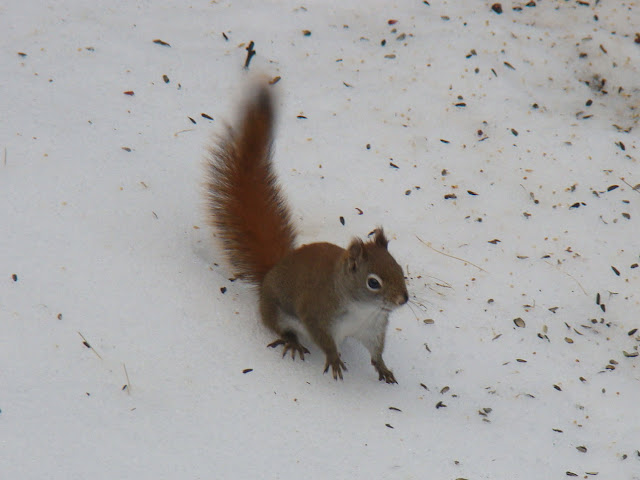 |
| First Ski of the Year - December 28, 2012 |
Our neighbors were fortunate enough to see a weasel, probably an Ermine, snow white with a black-tipped tail, before they left. It was bounding across their property with a mouse in it's teeth. When it saw a human it dropped its kill, and dashed off to hide, but after waiting and watching quietly, it returned to collect it's dinner and dash off with it. A pretty neat sight one is only likely to see in the winter.
The next day I found these weasel tracks in the fresh snow - the distinct double track of a weasel, and based on the size of the track it is likely an Ermine or a Long-tailed weasel.
 |
| Long-Tailed Weasel or Ermine Tracks |
On Wednesday I saw an interesting flying creature - actually, I heard it first. This extremely noisy apparatus came flying over the lake in the early afternoon.
An ultra-light must a great way to see the area, but it sure doesn't look all that secure hanging in the air barely above the tree tops. And it certainly isn't a peaceful ride.
I was rather surprised to see see the lake still not completely frozen as recently as Friday. The entire wide portion of the lake, from Loon Point, down along Sheep Island, and over to the Rawson Wood Islands was still open. The picture below was taken from the Hamlin area, looking east towards Corliss Hill. The cold weather tonight after the snow should finally freeze it up, but probably not safely. I measured four inches of ice about 20 feet out from shore in our cove a few days ago.
 |
| December 28, 2012 |























































